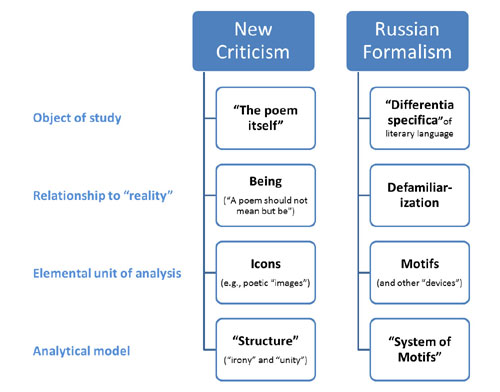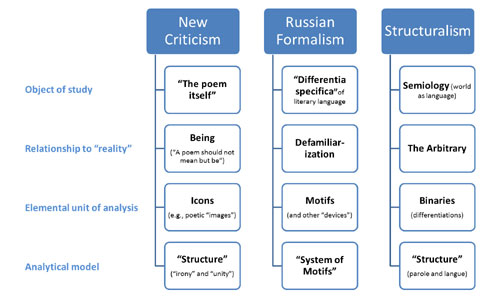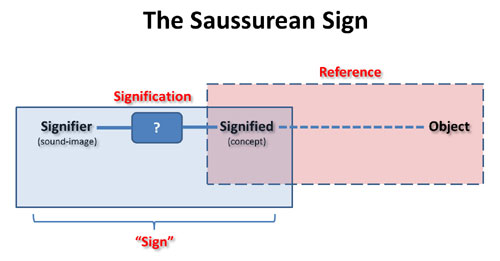-
If you are citizen of an European Union member nation, you may not use this service unless you are at least 16 years old.
-
You already know Dokkio is an AI-powered assistant to organize & manage your digital files & messages. Very soon, Dokkio will support Outlook as well as One Drive. Check it out today!
| |
Class 9 Notes
Page history
last edited
by Alan Liu 8 years, 11 months ago
Preliminary Class Business
(No office hours today. Instructor is giving a lecture at 4 pm in SSMS 2135 on "Key Trends in the Digital Humanities: How the Digital Humanities Challenge the Idea of the Humanities")
(Continued from last class)
Principles of Russian Formalism

(C). The Motif
- Story (fabula) vs. Plot (sjuzet)
- Boris Tomashevsky, from "Thematics" (1925)
- (p. 68): "Mutually related motifs form the thematic bonds of the work. From this point of view, the story is the aggregate of motifs in their logical, causal-chronological order; the plot is the aggregate of those same motifs but having the relevance and the order which they had in the original work. . . . [T]he aesthetic function of the plot is precisely this bringing of an arrangement of motifs to the attention of the reader."
- (p. 67): "After reducing a work to its thematic elements, we come to parts that are irreducible, the smallest particles of thematic material: 'evening comes,' 'Raskolnikov kills the old woman,' 'the hero dies,' 'the letter is received,' and so on. The theme of an irreducible part of a work is called the motif; each sentence, in fact, has its own motif."
- (p. 78): "The system of motifs comprising the theme of a given work must show some kind of artistic unity. If the individual motifs, or a complex of motifs, are not sufficiently suited to the work, if the reader feels that the relationship between certain complexes of motifs and the work itself is obscure, then that complex is said to be superfluous. If all parts of the work are badly suited to one another, the work is incoherent. That is why the introduction of each separate motif or complex of motifs must be motivated. The network of devices justifying the introduction of individual motifs or of groups of motifs is called motivation."
- Other materials for discussion:
(D). Structure (or System)
- Window screen analogy
- Vladimir Propp, Morphology of the Folktale (1928), pp. 92-93
- Sergei Eisenstein, Film Form: Essays in Film Theory, ed. and trans. Jay Leyda (New York: Harcourt Brace Jovanovich, 1949)
- Chess game analogy
Structuralism
Readings from Structuralism:
Principles of Structuralism

1. Semiology
2. The Arbitrary

3. The Binary

4. Structure
Differentiation + Homology
Parole vs. Langue
Syntagm Paradigm
Diachrony Synchrony
Class 9 Notes
|
|
Tip: To turn text into a link, highlight the text, then click on a page or file from the list above.
|
|
|
|
|
Comments (0)
You don't have permission to comment on this page.